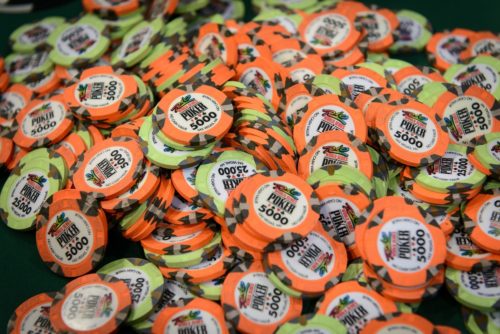
In multi-table poker tournaments, the bubble phase—when just a few eliminations remain before reaching the money—is a critical period that requires strategic finesse. Mastering this stage can significantly increase your chances of a deep run and a substantial payout. Here are ten essential tips to effectively navigate the bubble and enhance your tournament performance.
How to Play the Bubble
1. Identify “Players” vs. “Non-Players”
During the bubble, some players tighten up drastically, while others become overly aggressive. Recognizing these tendencies is crucial. Identify those who continue to play as usual versus those who have shifted to a more conservative approach. Target the latter with calculated aggression to exploit their caution.
2. Monitor Stack Sizes and Relative Risk
Stack sizes are pivotal during the bubble. Big stacks should avoid unnecessary confrontations with other big stacks but can pressure medium and short stacks. Medium stacks need to balance aggression and caution, avoiding significant risks against larger stacks. Short stacks should seek optimal shoving opportunities to stay in the game.
3. Avoid Passive Play
Passive play, characterized by excessive checking and calling, can be detrimental during the bubble. Instead, take the initiative with preflop raises, three-bets, and postflop bets. This approach leverages the tendency of other players to fold in response to aggression, helping you preserve and grow your chip stack.
Detailed Strategies
Distinguish “Players” from “Non-Players”
- Short Stacks: These players often tighten up, waiting for a strong hand to shove. Observe their tendencies and adjust your aggression accordingly.
- Big and Medium Stacks: Focus on players who have stopped opening pots from late positions or defending their blinds. Use well-timed raises and continuation bets to pressure them.
Remain Aware of Stack Sizes and Relative Risk
- Big Stacks: Utilize your chip advantage to pressure medium and short stacks. Avoid unnecessary risks against other big stacks.
- Medium Stacks: Be selective with your opens and avoid committing too many chips in marginal situations. Balance between aggression and caution.
- Short Stacks: Evaluate your position relative to other short stacks. With 8-10 big blinds, you still have fold equity, allowing for strategic open-raises. With less than 5-6 big blinds, you may need to shove with a wider range of hands, especially against tight players.
Stay Away from Passive Play
- Aggression: Use preflop raises, three-bets, and postflop bets to exploit the cautious play of others. This approach increases your chip stack and leverages the general tendency of players to fold during the bubble.
Additional Tips and Insights
Understanding Opponent Behavior
- Player Psychology: Recognize that some players will be more concerned with simply making the money, while others will focus on accumulating chips. Adjust your strategy to exploit these psychological tendencies.
- Table Dynamics: Pay close attention to the dynamics at your table. If several players are playing conservatively, increase your aggression to steal blinds and antes more frequently.
Adapting to Different Tournament Structures
- Large Fields vs. Small Fields: In large-field tournaments, the bubble can last longer, requiring sustained focus and strategic adjustments. In smaller fields, the bubble phase is shorter but still critical. Adapt your approach based on the tournament size and payout structure.
Balancing Risk and Reward
- Risk Management: During the bubble, it’s essential to balance the risk of elimination with the potential reward of accumulating chips. Avoid high-risk plays unless you are confident in your read on the situation.
Conclusion
The bubble phase in multi-table tournaments is a period where survival and chip accumulation strategies come into sharp focus. Players who solely focus on survival often miss opportunities to build a stack that can carry them deep into the tournament. By balancing aggression with caution and understanding the dynamics of the bubble, you can set yourself up for a deep run and maximize your earnings.
Disclaimer: The information presented in this article is based on the available data and current events around the time of publication, to the best of our staff research and knowledge. It is intended for educational and informational purposes only and should not be construed as professional advice, financial advice, sports betting advice, or life advice. It is simply our best guess, something to add to your research. We at Las Vegas Top Picks do our best to get stories accurate, but sometimes mistakes and biases happen, and it is always good to double-check other sources and media outlets to confirm stories and the factual details. The opinions expressed in this article do not necessarily reflect the overall opinion of Las Vegas Top Picks.








